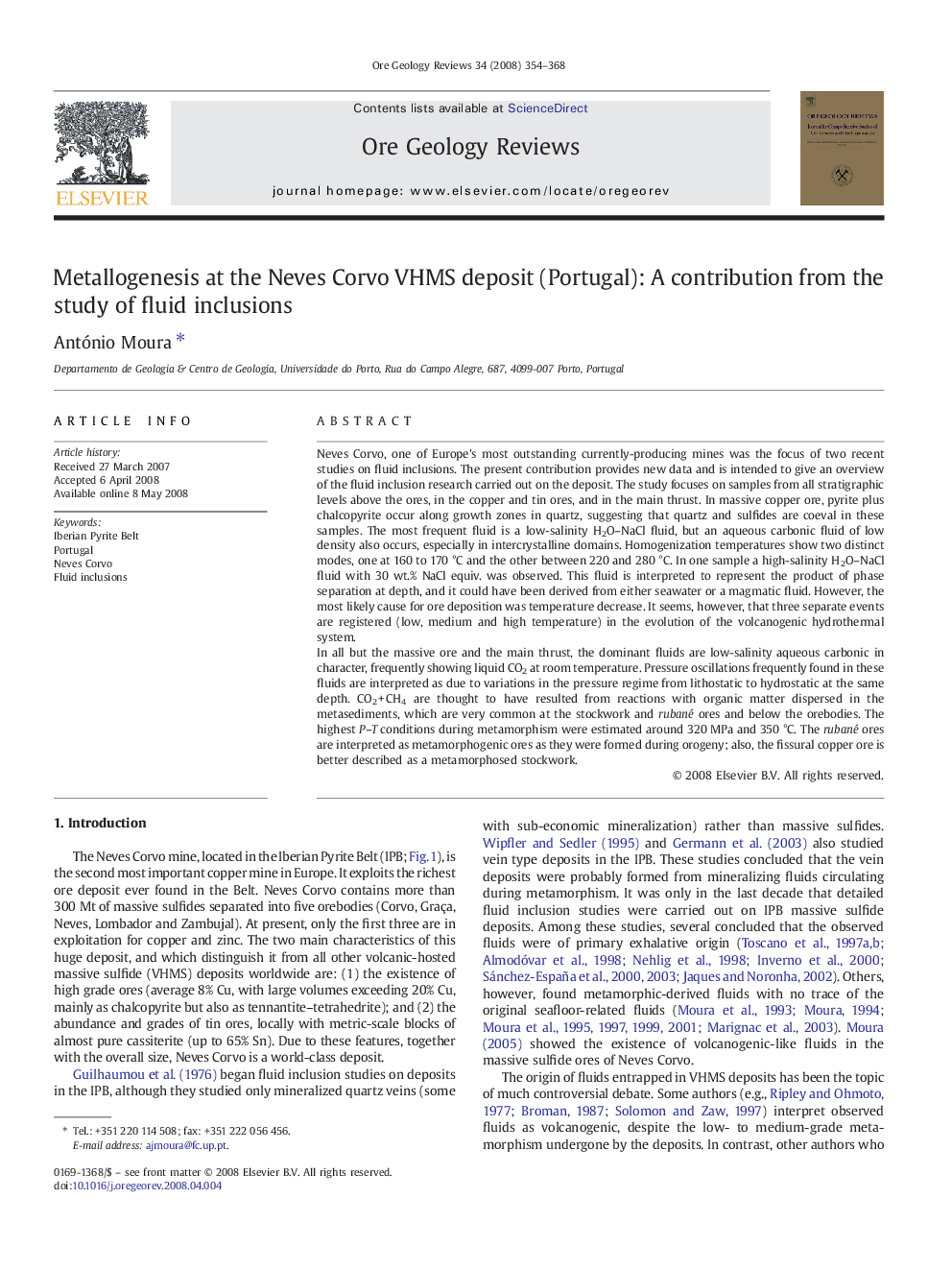| کد مقاله | کد نشریه | سال انتشار | مقاله انگلیسی | نسخه تمام متن |
|---|---|---|---|---|
| 4697977 | 1351915 | 2008 | 15 صفحه PDF | دانلود رایگان |

Neves Corvo, one of Europe's most outstanding currently-producing mines was the focus of two recent studies on fluid inclusions. The present contribution provides new data and is intended to give an overview of the fluid inclusion research carried out on the deposit. The study focuses on samples from all stratigraphic levels above the ores, in the copper and tin ores, and in the main thrust. In massive copper ore, pyrite plus chalcopyrite occur along growth zones in quartz, suggesting that quartz and sulfides are coeval in these samples. The most frequent fluid is a low-salinity H2O–NaCl fluid, but an aqueous carbonic fluid of low density also occurs, especially in intercrystalline domains. Homogenization temperatures show two distinct modes, one at 160 to 170 °C and the other between 220 and 280 °C. In one sample a high-salinity H2O–NaCl fluid with 30 wt.% NaCl equiv. was observed. This fluid is interpreted to represent the product of phase separation at depth, and it could have been derived from either seawater or a magmatic fluid. However, the most likely cause for ore deposition was temperature decrease. It seems, however, that three separate events are registered (low, medium and high temperature) in the evolution of the volcanogenic hydrothermal system.In all but the massive ore and the main thrust, the dominant fluids are low-salinity aqueous carbonic in character, frequently showing liquid CO2 at room temperature. Pressure oscillations frequently found in these fluids are interpreted as due to variations in the pressure regime from lithostatic to hydrostatic at the same depth. CO2 + CH4 are thought to have resulted from reactions with organic matter dispersed in the metasediments, which are very common at the stockwork and rubané ores and below the orebodies. The highest P–T conditions during metamorphism were estimated around 320 MPa and 350 °C. The rubané ores are interpreted as metamorphogenic ores as they were formed during orogeny; also, the fissural copper ore is better described as a metamorphosed stockwork.
Journal: Ore Geology Reviews - Volume 34, Issue 3, November 2008, Pages 354–368